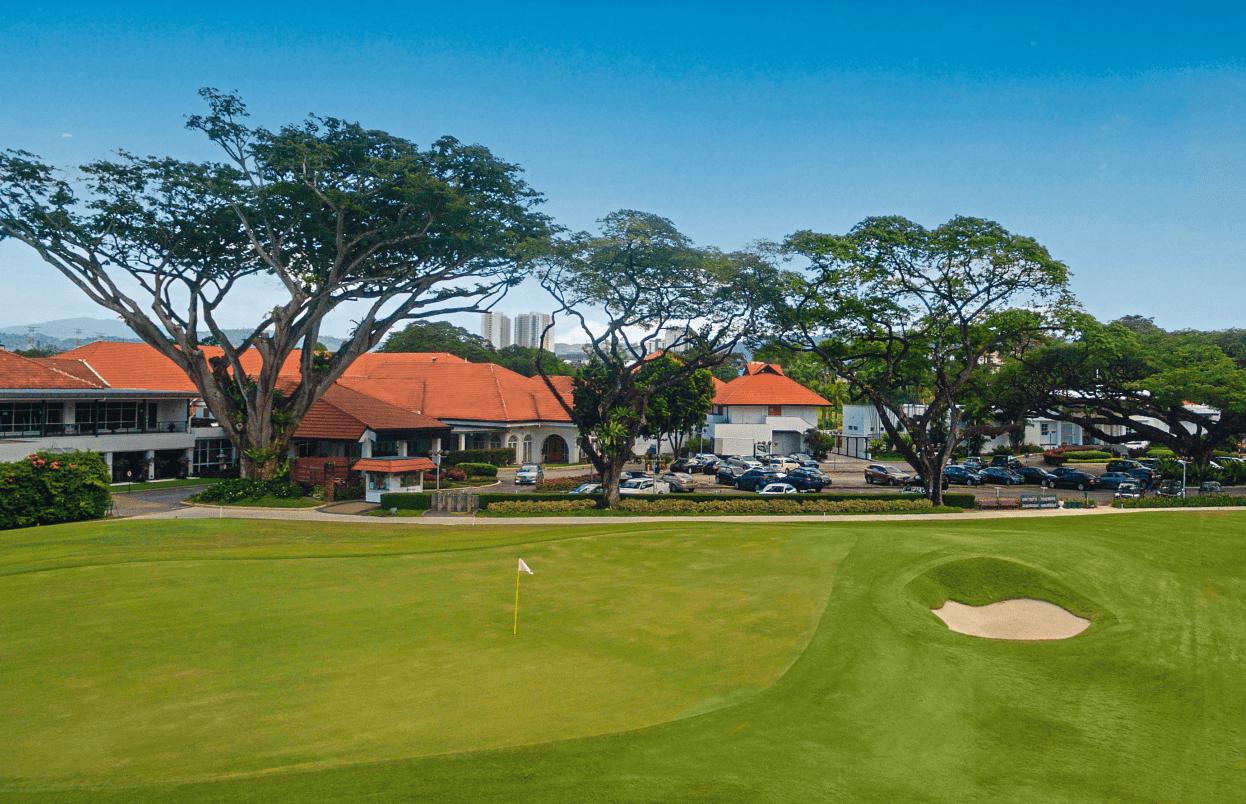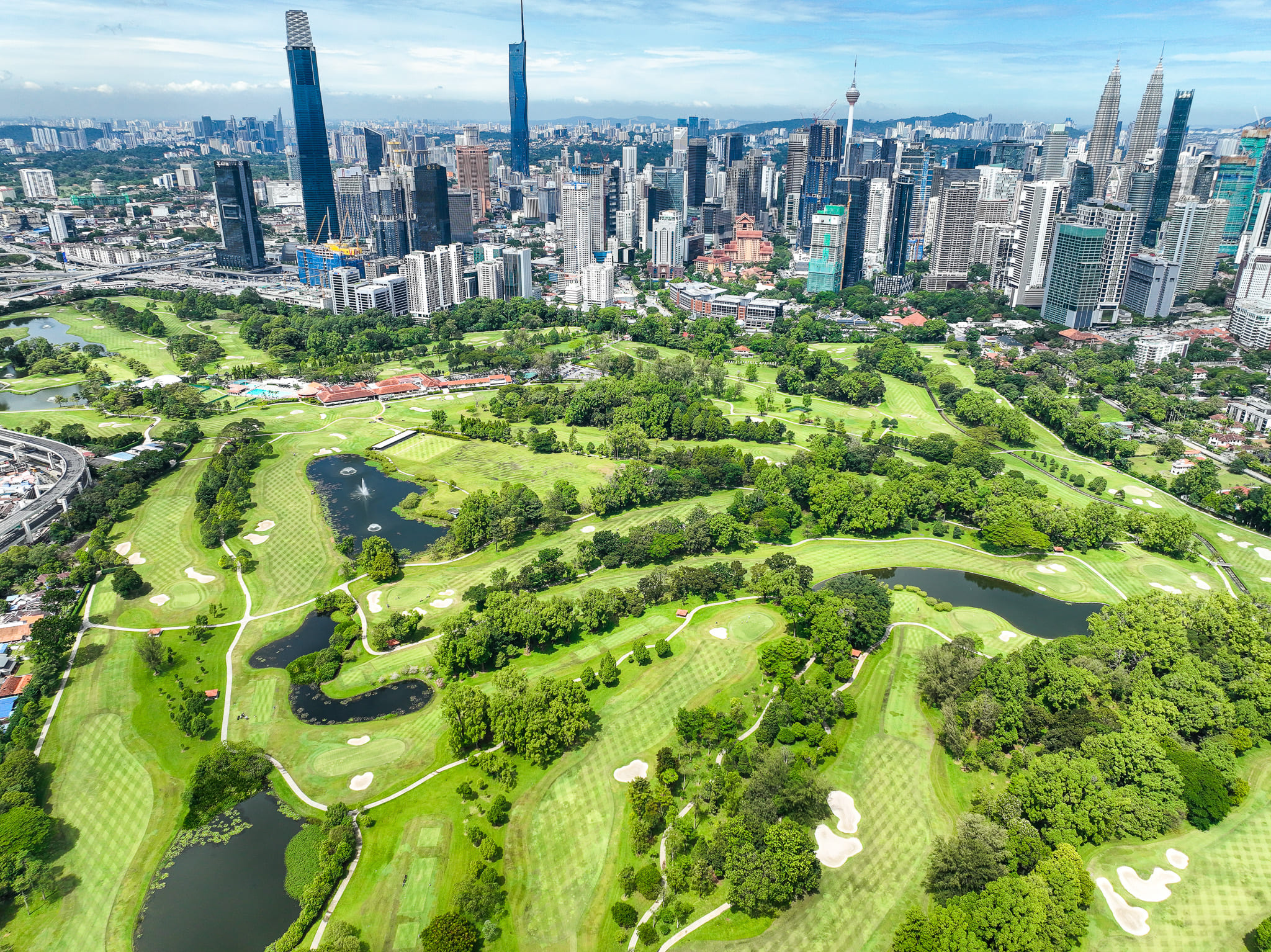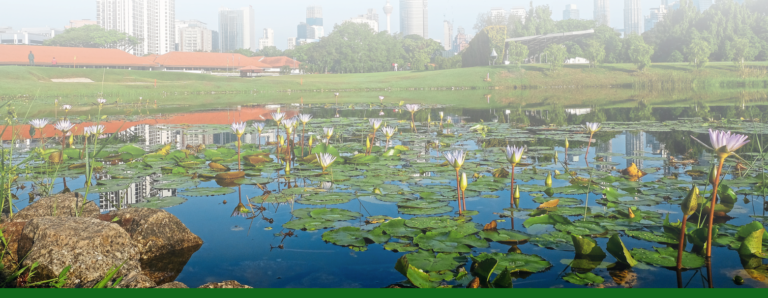TIME TO CALL IN THE PROFESSIONALS
Renovation to the courses did not stop in 1974. In the subsequent years, there was much effort at making minor improvements to the courses mainly with regards to building or enlarging tee boxes and such. Somehow, it still seemed that all this fine-tuning fell short in producing two championship golf courses that were on par with the best in the region. Even closer to home, the new clubs that were being built were setting the standards for tournament level golf. The message to the Committee was clear: the RSGC could not continue to live on past glory; a major overhaul was needed.
In 1981, after a 2-year study, it was decided that a comprehensive effort should be made. The “group-ofenthusiasts” design approach would no longer suffice. The Club finally recognised that the design and construction of modern golf courses fit for major tournaments – and the RSGC certainly had the ambition to continue to host the Malaysian Open – should really be left to professional golf course architects.
This proposal to modernise our courses ran into considerable opposition. On 5th October 1981, an extraordinary general meeting was called to approve the project.
Many of those present questioned the direction the Committee was taking. Was it really wise to build championship standard golf courses that would only interest professionals, yet be too difficult for Club Members? Why should so much money be paid to professionals for fees, and how could we be sure that they would do a good job of it? And why risk planting the new grass, Tifdwarf, when we have had Serangoon for a good part of 60 years, and the Subang Golf Club had used it with great success? Such doubts were to be expected when such a major enterprise was proposed.

However, the resolve of the Committee was firm. The Green Convenor, Tommy Lee (Past Captain and later, President of the Malaysian Golf Association) who stood up to defend the position of the Committee said, inter alia:
“Mr. Chairman, Fellow Members: … I can assure you that the Committee and I have spent many hours in the last two years working with the consultants. We have at our own expenses been to Jakarta to see the golf courses that they have built. We have seen the golf courses that they are building in Singapore right now. I can assure you that in a couple of years’ time when the 2nd 18 holes at Sentosa have been built by Ron Fream and the golf course at Tanah Merah is built near the near Changi Airport, all of us here will go down to Singapore and play at those golf courses rather than at SICC because SICC uses the Serangoon grass and has cow grass tees and cow grass fairways which do not give such good playing conditions. …
Mr. Fream has been connected with the building of the beautiful Bali Handara Golf Course in Bali and he and his firm have recently completed the Jagorawi Golf Course in Jakarta. I would urge any of you who have any doubts on his ability to visit these golf courses and I would also urge you to go to Singapore and see for yourselves the work that is going on at Sentosa and Tanah Merah. Sentosa already has an existing 18 holes with cow grass tees and Serangoon greens. When the new course is completed, with Tifdwarf greens and Santa Ana tees, you just play there and tell me which you think is better. …
Now, only last night I had a meeting with Ron Fream and all the views which you have expressed, all the doubts have been put by me and my Committee to Ron Fream. We have said to him we do not want to change the course for the sake of changing, we want definite improvements before we change. Why do you recommend Tifdwarf to us? Are you so absolutely certain it is going to succeed? He said to me last night the reason why he recommends Tifdwarf to us is because at the moment Tifdwarf is the grass that will give you the best putting surface for the tropics. …
As far as the sprinkler system is concerned, Mr. Fream works with a very well-known irrigation expert called Mr. Carl Kuhn. Mr. Kuhn has designed irrigation systems all over the world. He knows his business; he knows what he is doing. When he came here, we spent almost a day with him, looking at the water requirements to make sure we have sufficient water before we design the irrigation system. We examined the pond that we have. At the beginning he had some doubts. But then he made his calculations. He said he would have to deepen and widen the existing ponds which we have. He also wanted us to build a new pond which will be part of the new 16th hole Old Course. This will be part of the water supply and he assured us that if these are all done, there should be plenty of water. He, in his calculations, has taken into account the fact, of course, the longest drought that we know here. He is satisfied that we have enough of water. As far as the Committee is concerned, we accept his proposals. …
I would like to tell you something about the Tifdwarf grass. It came out of the United States in 1965. It was researched very extensively and was released by the US Department of Agriculture. Since 1965 there have been a lot of tests which have been done on this grass and in fact many golf course superintendents have used it. Mr. Edmund Yong who recently visited the United States and spent a lot of time looking at the golf courses, tells me that Tifdwarf is in fact extensively used in the United States – even in some of the leading and famous golf courses. …
I would stress the fact that I had told Mr. Fream many times, and he is well aware of this, that we do not design the course just for the professionals. We want a golf course that is enjoyable to all Members. You will see in his design that he has provisions for many tees, front tees and back tees and so on which will enable all Members to be able to play a hole with equal interest and equal problems. …
I have spoken a lot and it does, I think, come to the question which I posed right at the beginning – Are we prepared to switch to grass which definitely would give us better playing conditions? Any kind of grass requires attention and proper care, even Serangoon. Many of us who have played at Navatanee, seen the Bermuda grass they use, will know those grasses will give you a much better playing surface than what we use here. There is nothing special about Serangoon. Members have said we have used it for 60 years and so on but frankly I don’t think any golf course architect whether it is Robert Trent Jones or anybody else will use Serangoon for greens if you ask them to build a golf course for you today. Robert Trent Jones is building a golf course in Penang and I am told he is not using Serangoon. I am told he is building a golf course in Johore and he is not using Serangoon there either. I don’t think this question of Serangoon has such a special significance. Of course Subang has good greens using Serangoon but what I am saying is that it is the belief of modern golf course architects today that there are much better grasses available for our golf course than Serangoon.
So, gentlemen, thank you very much for letting me have my say.”

It was indeed a very persuasive and convincing speech. The motion to renovate the two golf courses was our heritage carried. It would be the first time in the Club’s history that the design work and the reconstruction would be entrusted to professionals.
The project started that December, supervised by Robin Nelson, an associate of Ronald Fream. By a quirk of history, Nelson would in some way be involved in the subsequent major reconstruction of 2005, not directly, but through the firm of Nelson & Haworth that he had founded after he left Ronald Fream Partnership. But Nelson was soon replaced (in mid-January 1982) by Tom Brown, who stayed on for the next two years as Course Consultant
The Committee was able to report good progress, and the 2nd Nine of the New Course was completed in November 1982 and was opened for limited play on 8th February 1983, and then became fully open in April.
As soon as the 2nd Nine was opened, work began on the 1st Nine, and it proceeded smoothly under the watchful eye of the Special Project Sub-committee, which met every Saturday morning to monitor progress. During the year a new sprinkler system was installed and the New Course had for the first time irrigation on all tees and greens.
The 1st Nine New was completed in June 1983 but was not opened for play until 18th December that year.
What was significant in this remodeling project was that almost all the work was concentrated on reconstructing the 18 tees and greens, and installing irrigation to them, and except for the odd bunker and the work on improving local drainage, little work was done to the fairways. They were not reshaped, and the cow grass was left intact. The eventual project cost came to RM2.12 million.
The remodeling of the Old Course, though approved by Members, was abandoned. Many Members, after playing on the 2nd Nine New, had asked the Committee not to proceed beyond the already started 1st Nine New. They complained about weed infestation of the 11th, 13th and 15th greens. The Green Convenor, Tommy Lee, reported that he had heard that some Members were so dissatisfied with the condition of the new nine holes that they thought no changes should be done to the Old Course.
Within two years of the completion of the 1st Nine New there were reports of Bermuda infestation, presumably the course common variety, and the 5th, 7th, 8th and 9th had to be returfed. Prior to that, the 1st and 2nd greens were completely reconstructed as they were found unsatisfactory.
THE RECONSTRUCTION OF 1991 – 1993
When Leslie Eu became the Captain he embarked on a plan to improve the 2nd Nine Old. This involved renovating and regrassing all the greens with Tifdwarf. But the most important element was the improvement to the poor drainage of the 15th and 16th holes. They occupied the lowest part of the Club property. What it essentially entailed was the deepening of the lake between the 2 holes to store more run-offs, and to raise the surrounding fairways. The work that was started in 1991 was completed in February1992. The Captain in his Captain’s Corner said: “The greens in my opinion are of the highest standard and the quality of homogeneity throughout is quite exceptional”.
When Eddie Soo took over the Captaincy in May 1992, he continued with the plan to upgrade the 1st Nine Old. This was completed and opened for play in mid-October 1992. By all accounts the renovation went well, and in 2 years the entire Old Course was fully renovated and had new Tifdwarf greens.
In the April 1993 issue of the Captain’s Corner, Eddie said “Members will be proud to know that our reasonably flat Championship Course with its new greens proved to be as challenging as any that the world can offer – so remarked many top professionals who had played in the recent Malaysian Open”.
Credit to YK Liew – Excerpt from the book ‘The RSGC: Veritably A Royal Heritage




